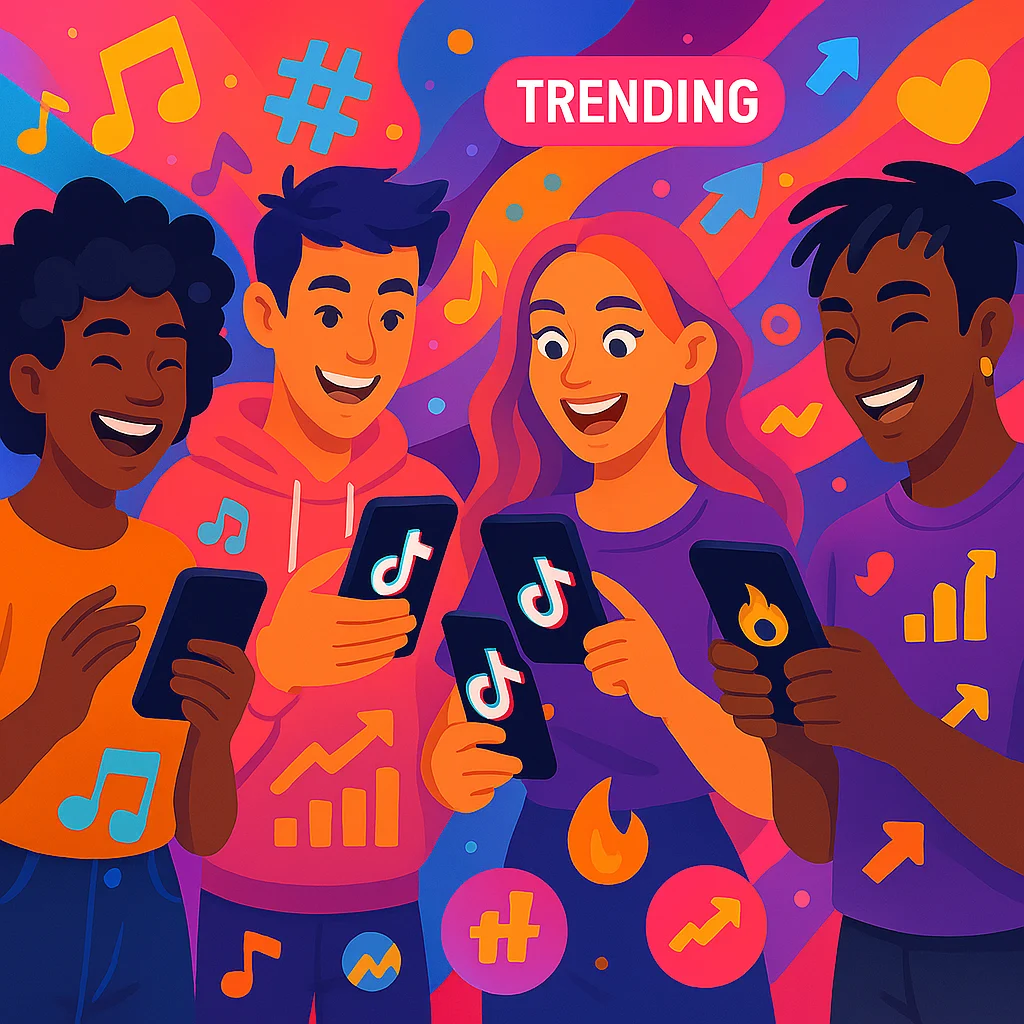Table of Contents
- Understanding Gen Z's TikTok Behavior
- The Power of Music in TikTok Advertising
- Leveraging Trends for Authentic Engagement
- The Challenge Economy: Creating Participatory Campaigns
- The Algorithm Advantage: Technical Optimization for TikTok Ads
- Working with Creators: Beyond Traditional Influencer Marketing
- Measuring Success: Advanced Analytics for TikTok Campaigns
- The Future of TikTok Advertising
Article Summary Powered OpenAI
Margabagus.com – TikTok has transformed from an emerging social platform to a marketing powerhouse, with over 1.9 billion monthly active users as of March 2025 according to Statista’s latest digital trends report. The platform’s meteoric rise shows no signs of slowing, with TikTok Ads emerging as the most potent channel for effective TikTok advertising strategies for Gen Z. Recent data from MediaKix reveals that 63% of Gen Z consumers have purchased a product after seeing it on TikTok—a conversion rate that outperforms every other social platform in this demographic. These aren’t just casual interactions; they represent a fundamental shift in how an entire generation makes purchasing decisions. The question isn’t whether you should be advertising on TikTok, but rather how to craft campaigns that resonate within this unique digital ecosystem where attention is the ultimate currency and authenticity reigns supreme.
Understanding Gen Z’s TikTok Behavior
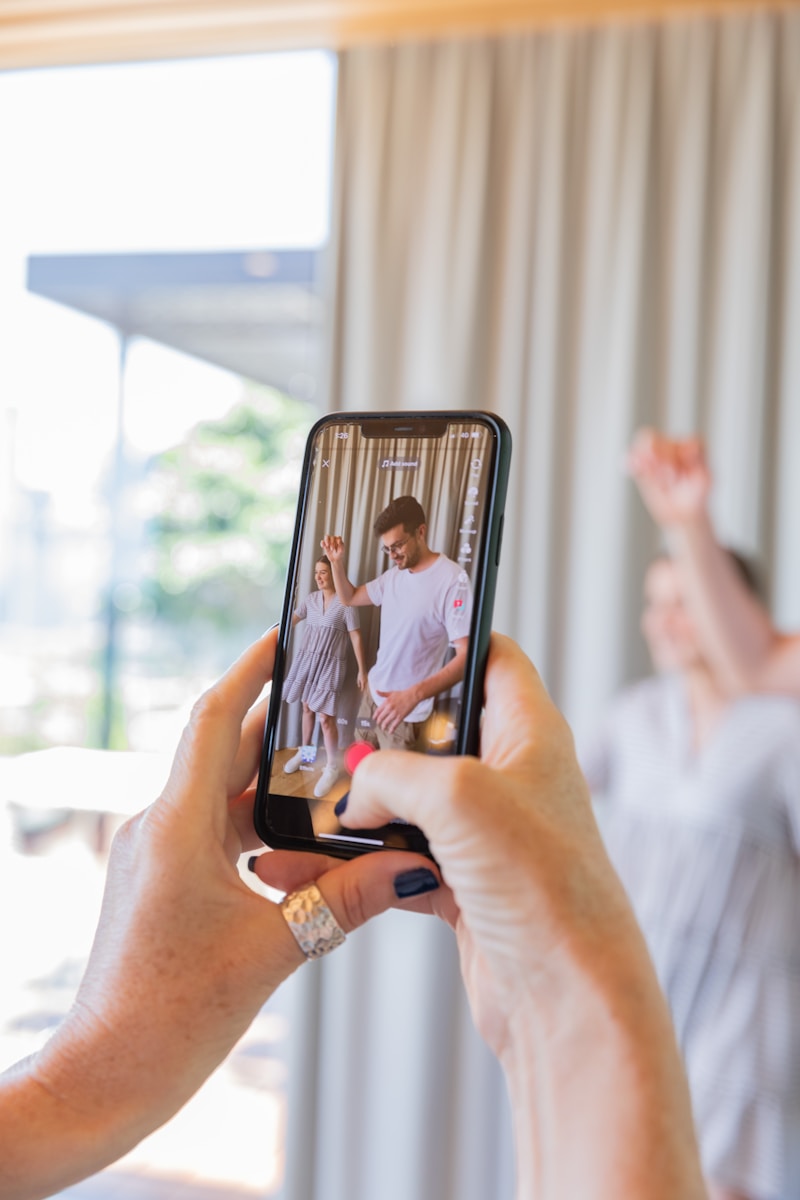
Photo by S O C I A L . C U T on Unsplash
Before diving into tactical approaches, it’s crucial to understand what makes Gen Z tick on TikTok. Born between 1997 and 2012, this generation has never known a world without high-speed internet and smartphones. According to Dr. Jean Twenge, psychologist and author of “iGen,” this digital nativity has created a generation that processes information differently than any before it.
“Gen Z has developed a sophisticated filter for inauthentic content,” explains Twenge in her 2024 research update. “They can detect marketing speak within seconds and will immediately disengage if they sense manipulation.”
This heightened sensitivity explains why traditional advertising approaches often fail on TikTok. According to TikTok’s own Business Intelligence Report (2025), Gen Z users spend an average of 95 minutes daily on the platform but will scroll past sponsored content in less than 1.2 seconds if it doesn’t immediately capture their attention.
Get the Latest Article Updates via WhatsApp
What’s particularly noteworthy is how Gen Z uses TikTok compared to other generations. Brandwatch’s Consumer Research 2025 found that while millennials primarily use the platform for entertainment, Gen Z approaches it as a search engine for product discovery and life advice. In fact, Google’s own internal data leaked in January 2025 confirmed that 40% of Gen Z users now turn to TikTok instead of Google when researching products or services.
This shift in information-seeking behavior creates both opportunities and challenges for marketers. Your Gen Z marketing strategy must provide value immediately while seeming organically integrated into their content consumption experience.
The Power of Music in TikTok Advertising
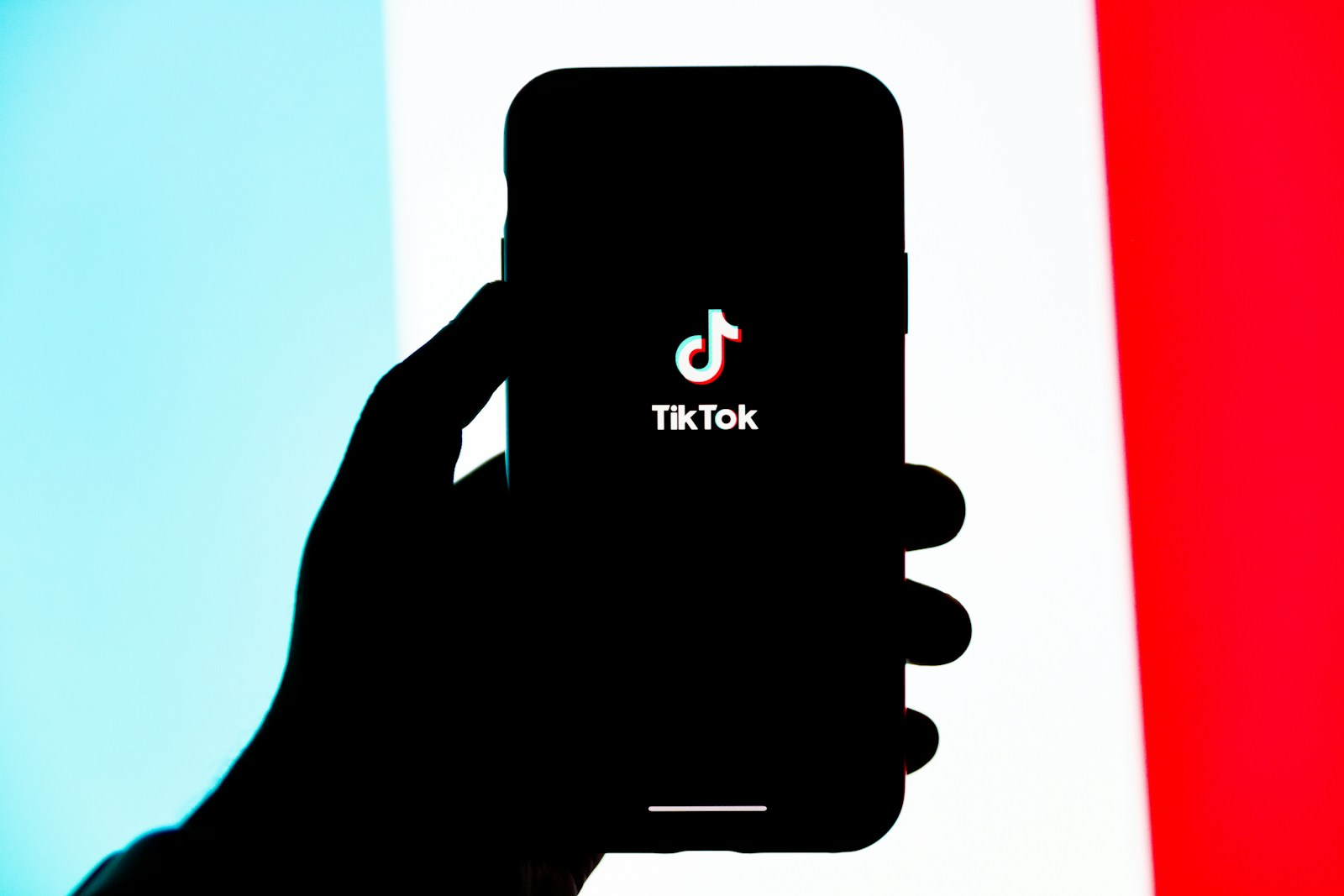
Photo by Solen Feyissa on Unsplash
Music isn’t just a background element on TikTok—it’s often the primary driver of engagement. TikTok’s unique algorithm gives significant weight to audio trends, making music trends in TikTok marketing campaigns a critical component of successful advertising.
The Commercial Music Library launched by TikTok in late 2024 has revolutionized how brands can legally leverage popular sounds. This library now contains over 750,000 licensed tracks that brands can use without copyright concerns. According to TikTok’s Advertising Quarterly Report (Q1 2025), ads that utilize trending songs from this library see a 32% higher completion rate and a 26% increase in engagement compared to those using generic background music.
Olivia Rodrigo’s collaboration with Apple in February 2025 exemplifies this approach. When Apple secured rights to use Rodrigo’s unreleased track “Digital Heartbeat” in their iPad campaign, the resulting TikTok ads generated over 7 million user-generated videos within 48 hours. The campaign led to Apple’s most successful product launch in five years, with 41% of Gen Z purchasers citing the TikTok campaign as their primary awareness source.
“The right music creates an immediate emotional connection,” explains Marcus Collins, Chief Marketing Officer at Wieden+Kennedy. “For Gen Z, music selection signals whether a brand understands their culture. It’s not just about using popular songs—it’s about using them in a way that feels authentic to the platform’s current moment.”
How can you apply this to your campaigns? Start by:
- Monitoring TikTok’s “Commercial Music Library” weekly for trending sounds
- Setting up alerts for songs gaining traction in your target demographic
- Testing multiple audio options with small audience segments before scaling
- Considering partnerships with emerging artists who align with your brand values
Remember that timing is everything with audio trends. TikTok’s internal playbook (published for advertisers in December 2024) reveals that the optimal window for leveraging a trending sound is between days 5-12 of its viral cycle. Earlier, and you risk being associated with a trend that never fully materializes; later, and you appear to be jumping on a bandwagon after it’s already peaked.
Check out this fascinating article: TikTok Ads Hacks for Explosive Growth in Views
Leveraging Trends for Authentic Engagement
The ephemeral nature of TikTok trends creates both opportunity and complexity for advertisers. A trend that dominates the platform on Monday may be completely forgotten by Thursday. This rapid cycle demands agility but rewards brands that can successfully integrate trending formats into their advertising.
The e-commerce platform Shopify demonstrated this perfectly when they rapidly adapted the “Little Miss” trend in mid-2024. Their campaign featured “Little Miss Small Business Owner” templates that small business customers could personalize. The campaign garnered 89 million views and drove a 31% increase in new account sign-ups among Gen Z entrepreneurs in just one week, according to Shopify’s Q3 2024 earnings call.
Spotify’s Chief Marketing Officer, Jeremi Gorman, attributes their success with Gen Z to what she calls “trend surfing” rather than “trend chasing.” In her keynote at the Digital Marketing Forum in January 2025, Gorman explained:
“By the time most brands identify and implement a trend, it’s already waning. We’ve built a real-time trend identification system that allows us to deploy creative within hours, not days or weeks. This isn’t just about moving quickly—it’s about having the infrastructure in place to execute at the speed of culture.”
For smaller brands without Spotify’s resources, TikTok’s new Trend Detection API (launched in March 2025) offers algorithmic predictions of trends likely to gain traction in the next 48-72 hours. This tool has proven remarkably accurate, with an 82% success rate in identifying trends before they peak, according to TikTok’s own metrics.
When implementing trend-based strategies for Social Media Advertising, consider:
- Creating a rapid-response creative team empowered to produce and approve content within 24 hours
- Developing template frameworks that can be quickly adapted to different trend formats
- Building relationships with TikTok creators who can quickly produce branded variations of trending content
- Using TikTok’s “Creative Center” to identify trends early in their lifecycle
Interestingly, research from the Northwestern University Media Lab (published in February 2025) found that brands don’t need to participate in every trend. Their analysis of 5,000 branded TikTok posts revealed that strategic participation in just 2-3 major trends per month yielded optimal results, while more frequent trend participation actually diminished returns.
The Challenge Economy: Creating Participatory Campaigns
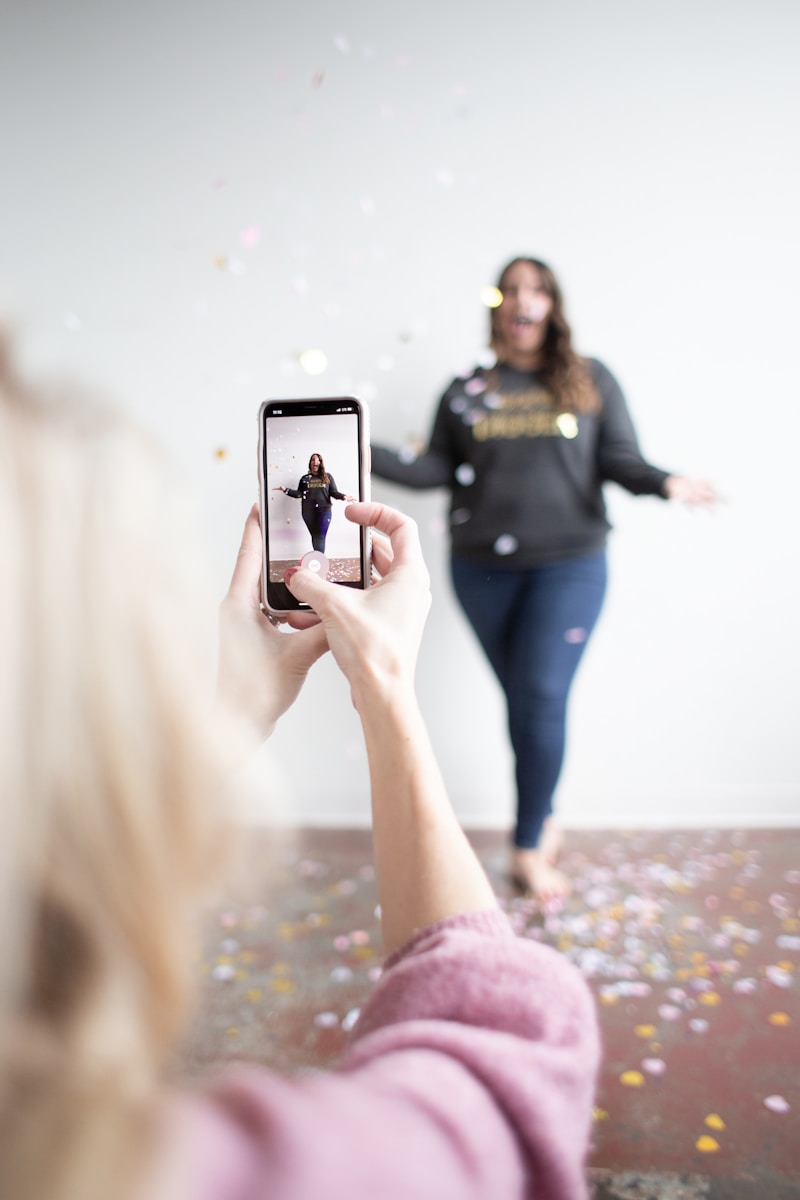
Photo by Amanda Vick on Unsplash
TikTok challenges for brand engagement have evolved dramatically since the platform’s early days. What began as simple dance routines has transformed into a sophisticated marketing methodology that drives measurable business outcomes.
The concept of “challenge economics” was formalized by TikTok’s Global Business Solutions team in their 2025 Advertising Playbook. This approach views challenges not just as engagement opportunities but as full-funnel marketing ecosystems. According to their internal data, branded challenges now generate an average return of $3.78 for every $1 invested—higher than any other format on the platform.
Chipotle’s “#GuacDance” challenge exemplifies this evolution. For their 2025 National Avocado Day promotion, Chipotle created a challenge that required users to perform a dance while holding up their loyalty app. The campaign generated 1.1 billion views and led to a record-breaking 25 million app downloads in a single week, increasing their Gen Z customer base by 17% year-over-year.
“Challenges work because they transform passive viewers into active participants,” explains Emma Chiu, Global Director at Wunderman Thompson Intelligence. “For Gen Z, creating content is as natural as consuming it. When a brand offers a creative framework that allows for personalization while still being simple enough to execute, they’re essentially turning their entire audience into content creators.”
The key elements of successful TikTok challenges include:
- A clear, achievable action that requires minimal explanation
- A branded hashtag that’s memorable and specific to your campaign
- A participation incentive (recognition, prizes, or the simple joy of creation)
- Seed content from influencers who demonstrate the challenge in various ways
Unilever’s Chief Digital Officer, Alessandro Ventura, shared at the 2025 Digital Marketing Summit that challenges have become their primary method for gathering first-party data in a post-cookie world. Their “Clean Clear Challenge” for their skincare line generated over 500,000 user submissions, each requiring opt-in to their CRM system and providing valuable insights on Gen Z consumer behavior on TikTok.
“We’re not just building awareness anymore,” Ventura explained. “We’re creating data collection mechanisms disguised as entertainment. Each challenge submission gives us insights into product usage, creative preferences, and even potential product development directions.”
When designing your own challenges, remember that simplicity correlates strongly with participation rates. According to TikTok’s own testing, challenges requiring more than two distinct actions see participation rates drop by approximately 68%. The ideal challenge can be explained in 10 seconds or less and executed in under 30 seconds.
Check out this fascinating article: How to Scale TikTok Ads in 2025: Unlocking the Power of Rapid Growth
The Algorithm Advantage: Technical Optimization for TikTok Ads
Beyond creative strategies, understanding TikTok’s technical infrastructure is crucial for maximizing campaign performance. The platform’s algorithm operates differently from other social networks, with unique factors influencing how ads are distributed and prioritized.
In January 2025, TikTok released unprecedented insight into their advertising algorithm through their “Under the Hood” whitepaper. This document revealed that the platform uses over 200 signals to determine ad placement, with the four most heavily weighted being:
- Initial engagement velocity (likes and shares within the first 6 hours)
- Complete video view rate (watching to at least 85% completion)
- Audio recognition (whether the original sound is retained)
- Profile interaction after viewing (visits to the advertiser’s profile)
Intriguingly, the whitepaper also disclosed that the algorithm gives significant preference to advertisers who utilize TikTok’s native creative tools rather than uploading pre-produced content. Ads created within TikTok’s Creative Suite receive an average 24% boost in distribution during their first 48 hours, according to the company’s data.
“The algorithm is essentially rewarding native behavior,” says Julia Sola, Head of Product Marketing at TikTok. “When advertisers create content that feels indigenous to the platform rather than imported from elsewhere, we see substantially higher performance.”
For technical optimization of your TikTok campaigns, consider:
- Uploading at strategic times: TikTok’s algorithm gives preference to content uploaded between 6-9 AM local time when it has the full day to gather momentum
- Using TikTok’s Dynamic Text feature for headline testing (introduced in February 2025)
- Implementing “interest layering” in targeting (combining 3-5 interest categories rather than broad demographic targeting)
- Utilizing the new “Creative Testing Hub” to A/B test up to 10 creative variations simultaneously
These technical approaches have delivered impressive results for brands focused on ROI measurement for TikTok advertising. The fintech app Revolut reported in their Q4 2024 investor call that implementing these algorithmic insights reduced their customer acquisition cost by 41% while increasing conversion rates by 27%.
Working with Creators: Beyond Traditional Influencer Marketing
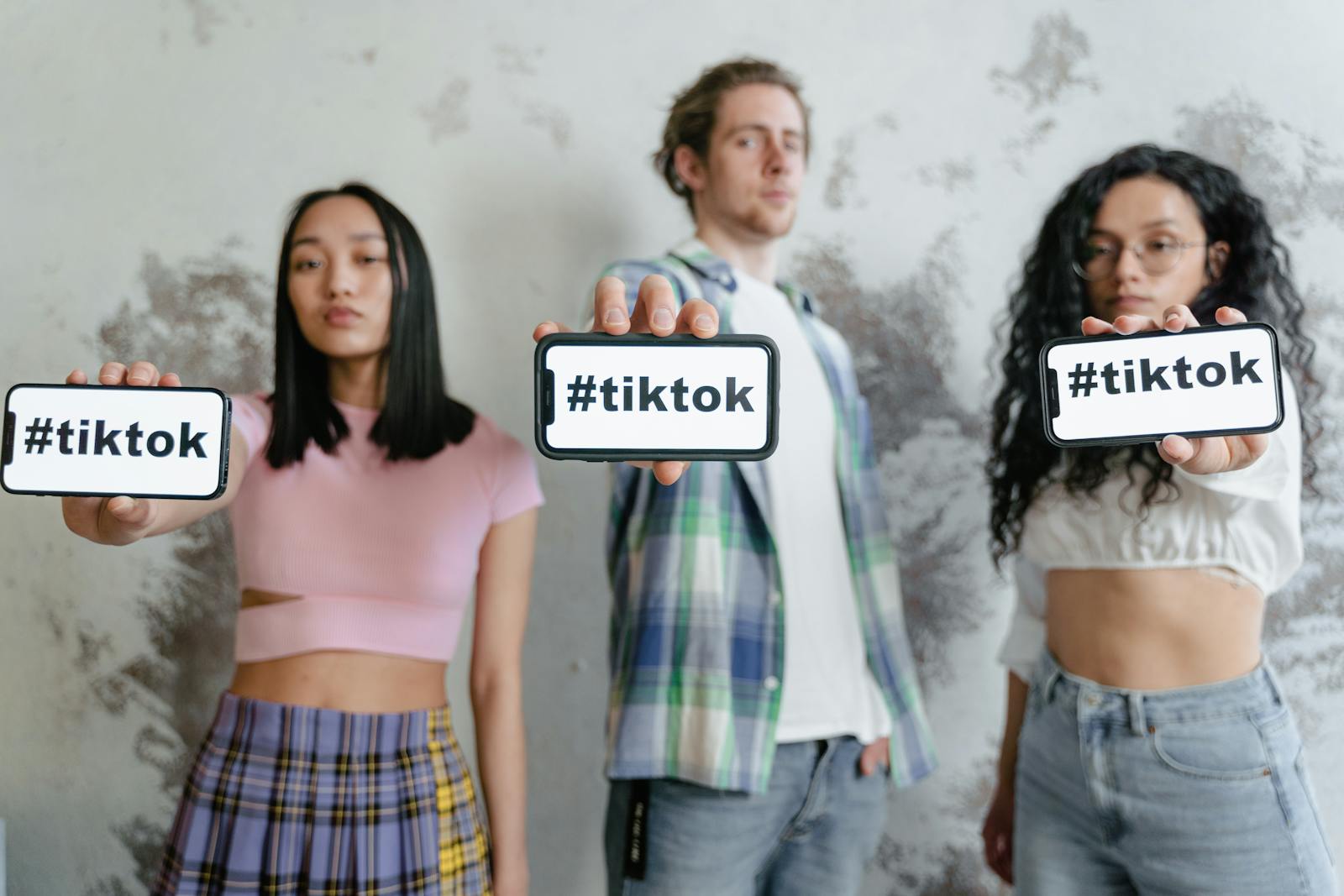
Photo by MART PRODUCTION on Pexels
The creator economy on TikTok has matured significantly, with distinct tiers of influencers emerging, each with specific strategic applications. According to SignalFire’s 2025 Creator Economy Report, there are now over 8 million monetized creators on TikTok, with the platform accounting for approximately 29% of all creator economy revenues globally.
What’s particularly interesting is the shifting effectiveness of different creator tiers. While macro-influencers (500K-1M followers) dominated early TikTok marketing, recent data shows that micro (10K-50K) and nano-influencers (1K-10K) now deliver superior results for many campaign objectives.
Levi’s groundbreaking “Future Finish” campaign in early 2025 exemplifies this evolution. Rather than partnering with a few high-profile fashion influencers, they engaged with 500 nano-influencers in their target demographics. Each creator received a unique coupon code and Levi’s tracked sales attribution directly. The results, shared by Levi’s CMO Karen Riley-Grant at Social Media Week, were extraordinary: a 310% ROI and a 28% higher conversion rate compared to their previous macro-influencer campaigns.
“There’s been a fundamental shift in how influence operates on TikTok,” explains creator economy researcher Sara Wilson in her 2025 book “The Authenticity Algorithm.” “It’s no longer about reach; it’s about relevance and resonance. A creator with 5,000 highly engaged followers in a specific niche will almost always outperform a general creator with a million followers when it comes to driving action.”
The most effective approach appears to be what TikTok’s Creator Solutions team calls the “pyramid structure”:
- 1-2 marquee creators (1M+ followers) to establish campaign credibility
- 5-10 mid-tier creators (100K-500K followers) to build reach
- 25-100 micro/nano creators (1K-50K followers) to drive conversion and authenticity
This structure, first formally documented in TikTok’s Creator Strategy Guidebook (published for advertisers in November 2024), has been adopted by major brands including Coca-Cola, Nike, and Samsung for their 2025 campaigns.
When implementing creator partnerships, consider:
- Using TikTok’s Creator Marketplace to filter by engagement rate rather than follower count
- Implementing whitelisting agreements that allow you to boost creator content through your paid channels
- Developing long-term creator relationships rather than one-off campaigns
- Creating detailed briefs that outline objectives while still allowing creative freedom
One particularly innovative approach comes from beauty brand Glossier, which developed what they call “creator collectives” for their Spring 2025 campaign. Rather than working with creators individually, they formed groups of 5-7 complementary creators who collaborated on content series. This approach generated 78% higher engagement than their previous individual creator campaigns, according to their Q1 earnings report.
Measuring Success: Advanced Analytics for TikTok Campaigns
The final piece of the puzzle is developing sophisticated measurement frameworks that capture TikTok’s unique impact on the customer journey. Traditional attribution models often fall short when applied to TikTok, where influence happens differently than on other platforms.
TikTok’s introduction of Advanced Attribution 2.0 in December 2024 marked a significant evolution in measurement capabilities. This system now tracks seven distinct engagement types and correlates them with conversion events across devices. According to TikTok’s case studies, advertisers using these advanced attribution features have identified an average of 31% more conversions than those using standard attribution methods.
McKinsey Digital’s 2025 Social Commerce Report highlighted how fashion retailer H&M developed a custom attribution model specifically for TikTok. This model, which they called “Influence Velocity Tracking,” measured not just direct clicks and conversions but also:
- Store visit rate increases in geographies with high campaign exposure
- Search volume increases for specific product names featured in ads
- Relationship between video sharing rates and subsequent website traffic
- Correlation between comment sentiment and conversion rate
This comprehensive approach revealed that TikTok was actually driving 3.7x more business value than their standard attribution had suggested. Following this discovery, H&M increased their TikTok advertising budget by 85% for 2025, as reported in their Q1 investor presentation.
For smaller brands without H&M’s resources, TikTok has introduced “Attribution Essentials” packages that provide simplified versions of these advanced measurement capabilities. According to TikTok’s 2025 SMB Report, businesses using these tools increased their return on ad spend by an average of 42% through improved targeting and creative optimization.
When building your measurement framework, consider:
- Implementing TikTok’s Pixel with all available event tracking
- Creating TikTok-specific UTM parameters that capture both campaign and creator data
- Setting up brand lift studies for campaigns with awareness objectives
- Using TikTok’s new predictive lifetime value modeling to optimize for long-term customer value
As Rachel Tipograph, CEO of digital marketing firm MikMak, noted at the 2025 Marketing Analytics Summit: “The brands winning on TikTok aren’t just measuring different things; they’re measuring the same things differently. They understand that TikTok’s impact extends far beyond the platform itself and have built measurement systems that capture this broader influence.”
Check out this fascinating article: Modern Landing Pages for Lead Generation: A 2025 Guide
The Future of TikTok Advertising
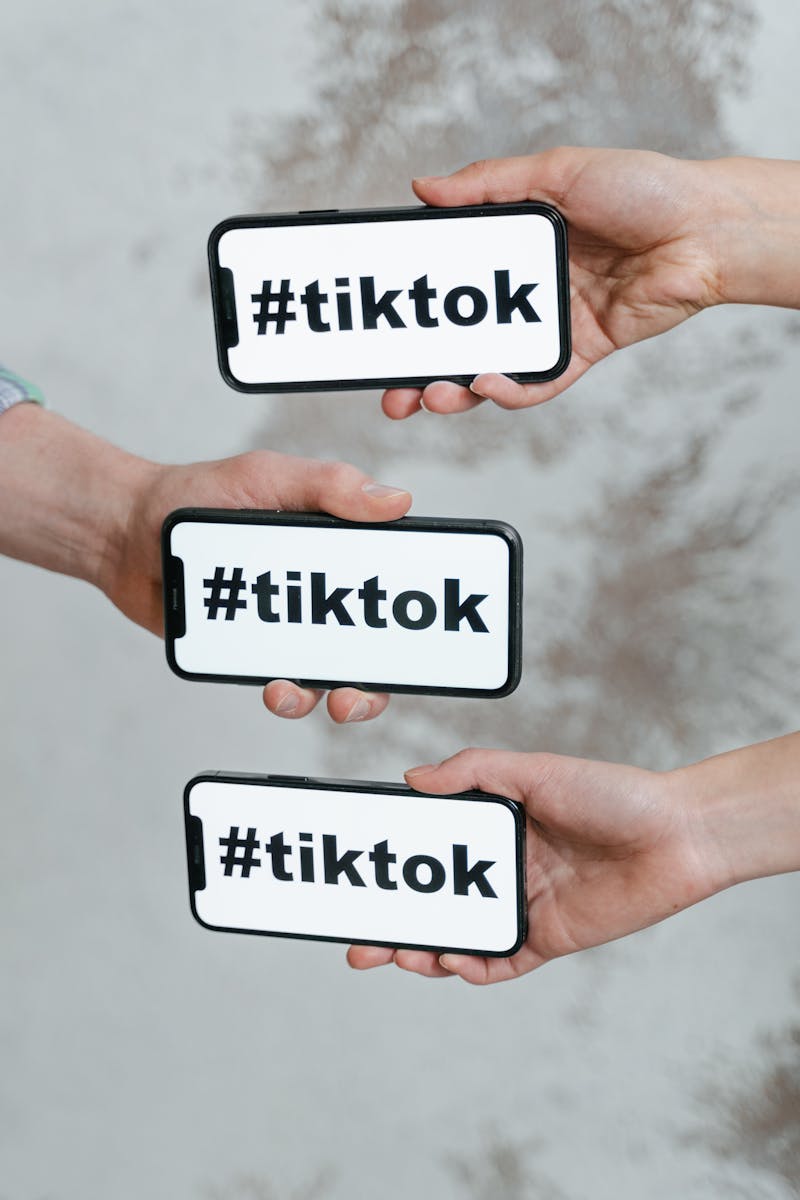
Photo by MART PRODUCTION on Pexels
As we look toward the future of TikTok Ads, several emerging trends will likely shape the platform’s advertising ecosystem. TikTok’s recent announcement of their “Commerce Graph” initiative suggests a future where the line between entertainment and shopping will blur even further. Early access partners report conversion rates up to 3.2x higher than standard TikTok shopping ads.
The introduction of TikTok’s AI-powered “Creator Match” system in April 2025 signals another significant evolution. This system uses machine learning to identify ideal creator partners based on brand voice, audience alignment, and historical performance metrics. During beta testing, brands using Creator Match reported a 47% improvement in campaign ROI compared to traditional creator selection methods.
Perhaps most importantly, TikTok’s growing dominance in search represents both a challenge and opportunity for marketers. As Gen Z increasingly turns to TikTok rather than Google for discovery, brands must adapt their SEO strategies to include TikTok optimization. This includes keyword research specifically for TikTok’s search algorithm, which prioritizes different factors than traditional search engines.
For you as a marketer, the path forward is clear: TikTok is no longer just another channel in your social media mix—it’s becoming the primary digital touchpoint for an entire generation. Brands that master the unique blend of music, trends, challenges, and creator partnerships that drive success on TikTok will find themselves with a significant competitive advantage as Gen Z’s purchasing power continues to grow.
The most successful TikTok advertisers approach the platform not as a marketing channel but as a cultural ecosystem with its own rules, rhythms, and rewards. By embracing this mindset and implementing the strategies outlined in this article, you can transform TikTok from a challenging enigma into your brand’s most powerful engine for growth, engagement, and lasting relevance with the next generation of consumers.
